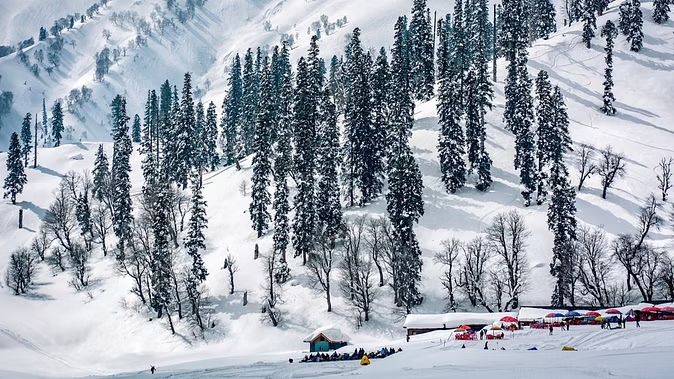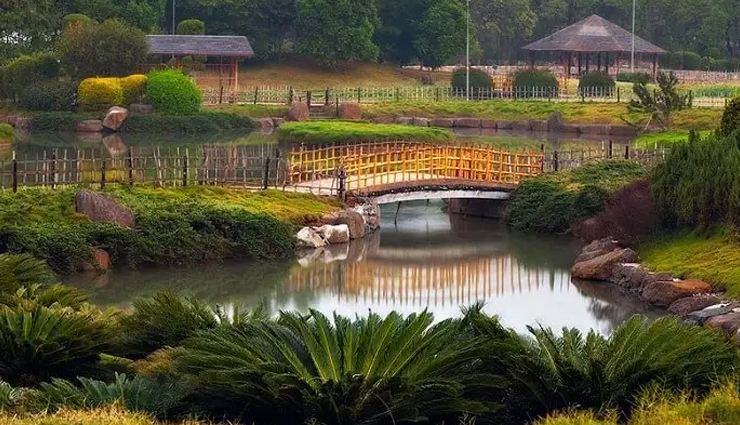
This Sun Temple of Konark is included in the UNESCO World Heritage List. The responsibility for its maintenance rests with the Archaeological Survey of India (ASI). The work of this organization is the protection of cultural heritage. This institution works under the Ministry of Culture, Government of India.
Infinite Victory. Sometime back, I got the opportunity to visit the Sun Temple at Konark, Odisha. The huge temple looked very grand from the entrance of the Sun Temple complex. Information about this temple was seen on an inscription as soon as we entered the premises. This unique piece of architecture was built in 1250 AD during the reign of Ganga King Narasimhadeva I to establish the Sun idol. This entire architecture was modeled in the form of a huge chariot. This masterpiece has twelve pairs of ornate wheels and is pulled by seven horses. According to the inscription, this temple is an excellent example of the culmination of Odisha's architectural art. The sanctum sanctorum and the Natya Mandir of this temple are in a fragmented form, while Jagmohan is in a safe condition. Divine-human beings, trees, plants, and animals as well as geometrical ornaments abound on the walls of the temple. The body structure, ornamentation, and expressions of girls, dancers, and musicians are special to see.

After reading the inscription, my curiosity to see the temple closely increased. After reading the description of the inscription, he reached the temple for a real observation of the image that was made. There are stairs from the front side to go towards the main temple. There is also an entrance before those stairs. There is an elephant figure made of huge rocks. Suddenly my eyes fell on a stone shaped like an elephant on one side and I saw a paste of sand and cement on one of its feet. On closer inspection, it appeared that the statue had been filled with cement and sand to bridge the crack. It also seemed that cement slurry had been poured over it. The traces of dissolved cement were visible on the elephant. These marks were making that artwork ugly. After walking around the temple and seeing the stone carvings in the Sun Temple, I was very impressed with the architecture of the temple. It was unforgettable to know about the temple construction art of our country and to see it firsthand.
The Sun Temple of Konark is included in the UNESCO World Heritage List

This Sun Temple of Konark is included in the UNESCO World Heritage List. The responsibility for its maintenance rests with the Archaeological Survey of India (ASI). The work of this organization is the protection of cultural heritage. This institution works under the Ministry of Culture, Government of India. There is so much carelessness in the conservation of such an excellent piece of art that the crack of an artwork is being filled in a very ugly way. Pouring solution of crack bridging material on it thereby destroying its beauty. The question arises why ASI is so careless about the conservation of Konark Sun Temple. Are these protected heritage sites not maintained under the supervision of experts? Is there no annual audit for the maintenance of this cultural heritage? About a year and a half ago, I had a similar experience while visiting the Ukoti campus in Tripura. Ukoti, located at a distance of about two hundred kilometers from Agartala, has the best stone carvings. There is a stone statue of 'Unkoteshwar Kalabhairav' of about thirty feet in this complex. The crown of this idol is made of a stone of about ten feet, which has wonderful artwork. Around them, the images of two goddesses are engraved on the stone. Nearby are two stone idols of Nandi. On the other side of the idol of Kaal Bhairav, there is an idol of Ganesh ji on a huge rock, on both sides of which pictures of an elephant's face are engraved. The ASI is also responsible for the maintenance of the Unkoti complex. There too, no special effort was shown to preserve those idols. Some idols may have been locked in a room, but thousands of idols are kept like this and people keep climbing on them. In one place, clothes were being washed on an idol. This has been discussed in detail in this column.
Preserve your heritage

Prime Minister Narendra Modi speaks of pride in heritage while announcing five vows from the ramparts of the Red Fort at the Amrit Mahotsav of Independence. To save this pride, on the initiative of the Prime Minister, the new form of Kashi Vishwanath Temple, the grand complex of Ujjain's Mahakal Lok was built. A grand Ram temple is being constructed in Ayodhya. Before this, the mythology of the temples of Gujarat from Kedarnath Dham was saved with grandeur. This is being seen as a cultural revival in the country. To be proud of our heritage, we must preserve our heritage. The negligence and apathy of the ASI, an organization under the Ministry of Culture, are visible in saving its heritage. In the last session of Parliament, on 13 December 2022, the Standing Committee of the Ministry of Culture presented a report in the Rajya Sabha. This committee of Parliament, attached to the Ministry of Culture, in its report number 330, has raised serious questions about the working of ASI. In the report, the committee has made very strong remarks about the utilization of funds in the Ministry/ASI.
There are 166 vacancies in the archeology cadre of ASI.

According to the committee, the ministry in its reply has not mentioned how the funds allocated to ASI were further allocated and utilized. Apart from this, the committee has also commented on the delay in filling the vacant posts in ASI. Underlining the situation of vacant posts in various institutions of the Ministry of Culture, the situation was said to be very pathetic. It has been told in the report of the committee that 420 posts are sanctioned in the archeology cadre of ASI, out of which 166 posts are vacant. The total sanctioned posts in the protection cadre are 918 out of which 452 posts are vacant. The Ministry of Culture clarified these comments of the Committee, but the Committee could not be satisfied with the reply of the Ministry. He also registered his dissatisfaction with the report. In this report of the Parliamentary Committee on the functioning of the Ministry of Culture, displeasure has been expressed over how nearly fifty percent of the posts are vacant. Could the Ministry or ASI not assess how many posts are going to be vacant in the future? If this had happened in time, this situation would not have happened.
Why does such a situation arises in the Ministry of Culture that many institutions related to it are running in an ad hoc manner for years? From the Bharatiya Janata Party to the Rashtriya Swayamsevak Sangh, people are sensitive about the country's culture and cultural heritage, yet if culture is not coming in the priority of the ministries, then there is a need to consider the reasons for it. Is bureaucracy not sensitive to culture? Special training should be given to the persons and officials responsible for the culture and its protection. The Ministers of the Ministry of Culture must take interest in art, culture, and conservation and be sensitive towards it. Respecting artists and their skills. It has been discussed many times in this column that there is a need for a comprehensive cultural policy in the country to bring culture to the priority list of the government. A policy that harmonizes culture, cultural heritage conservation, and events.










